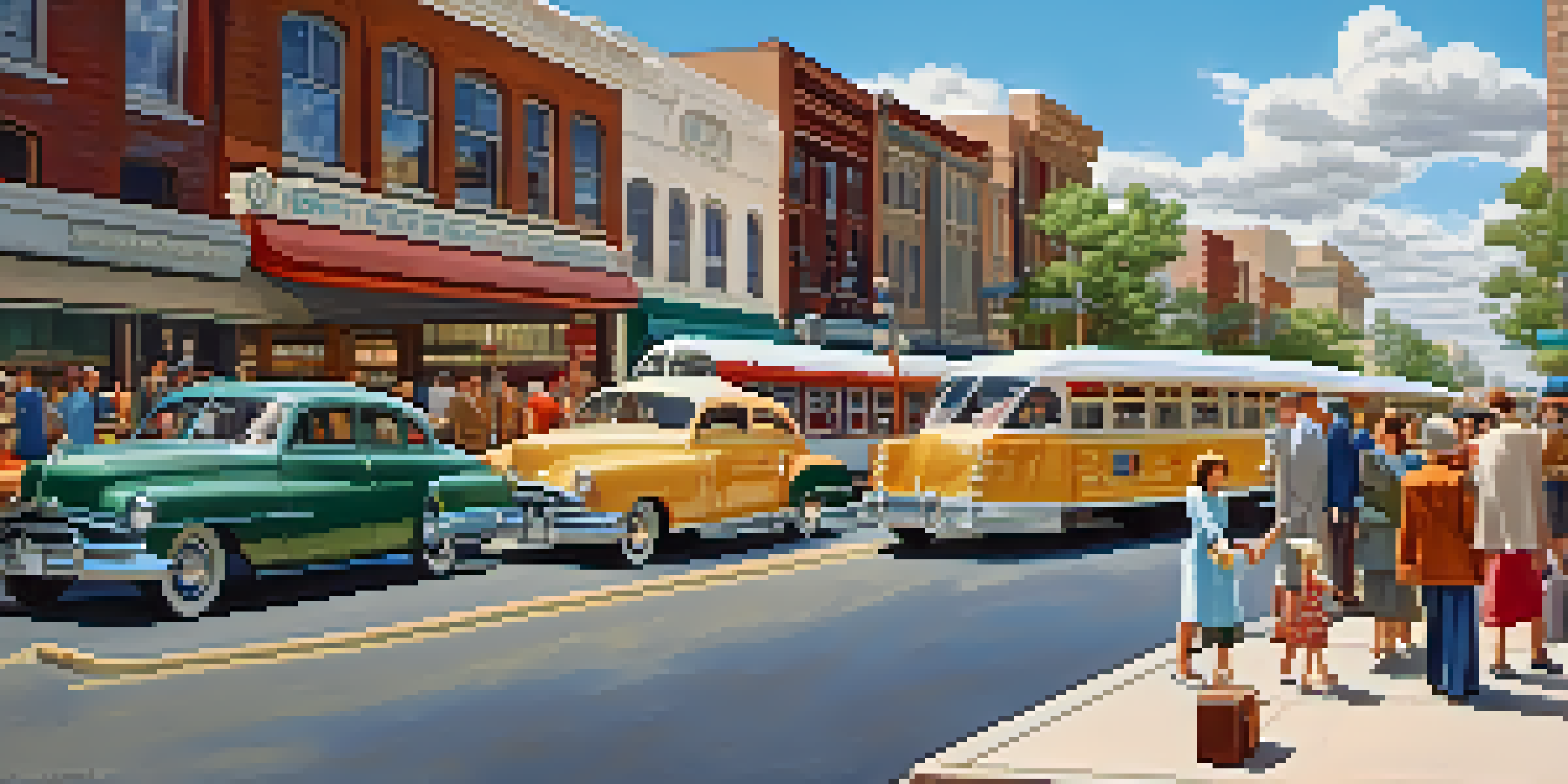Phoenix's Public Transportation and the Post-War Boom Era

The Rise of Phoenix: A Post-War Boom Overview
After World War II, Phoenix experienced a significant population surge, transforming from a modest desert town into a bustling city. This boom was fueled by returning veterans, job opportunities, and an influx of families seeking a better life. The city's landscape began to change, with new neighborhoods and businesses emerging at an unprecedented rate. As a result, the demand for an efficient public transportation system became crucial to connect the growing population with jobs and services.
Early Public Transportation: Trolleys and Buses
In the early days following the war, Phoenix relied heavily on streetcars and buses for public transportation. The streetcar system, which had been in place since the early 1900s, saw a resurgence as more people needed to commute. However, the rise of the automobile led to a decline in streetcars. By the late 1950s, the streetcar lines were dismantled, leaving buses as the primary mode of public transit for residents.
Phoenix's Population Surge Post-War
Following World War II, Phoenix transformed from a small desert town to a bustling city due to an influx of returning veterans and families.
The Impact of Urban Sprawl on Transit Planning
As Phoenix expanded, urban sprawl became a defining characteristic of the city. This spread-out development complicated public transportation planning, making it challenging to provide efficient service to all areas. Neighborhoods grew further apart, and many residents relied on personal vehicles, leading to traffic congestion. The challenge was to create a public transit system that could adapt to the city's rapid growth while serving diverse communities.
The Shift to Modern Transit Solutions
In response to the challenges of urban sprawl, Phoenix began to explore modern transit solutions in the late 20th century. This included the introduction of light rail systems designed to provide a more reliable and efficient means of transportation. By investing in infrastructure, the city aimed to reduce reliance on cars and promote sustainable transit options. The light rail became a symbol of Phoenix's commitment to improving public transportation for its residents.
Urban Sprawl Challenges Transit Planning
As the city expanded, urban sprawl complicated public transportation planning, making it difficult to provide efficient services to all residents.
Community Engagement: Shaping Transit Development
Community input has played a vital role in shaping the direction of public transportation in Phoenix. Local residents and advocacy groups have pushed for improved transit options that cater to their needs. Public forums and surveys have allowed citizens to voice their opinions on proposed routes and services. This engagement has led to a more inclusive approach to transit planning, fostering a sense of ownership among residents.
Challenges Facing Modern Public Transportation
Despite the advancements in public transportation, Phoenix still faces several challenges. Limited funding for transit expansion and maintenance has hindered the ability to meet growing demands. Additionally, many neighborhoods remain underserved, leaving residents without reliable options. Addressing these issues is critical to ensuring that public transportation can keep pace with the city’s continued growth.
Future Innovations for Public Transit
Phoenix is exploring innovative solutions, including technology integration and expansion of light rail, to enhance its public transportation system.
Future Directions: Innovations in Public Transit
Looking ahead, Phoenix is exploring innovative solutions to enhance its public transportation system. This includes integrating technology such as real-time tracking apps to improve user experience. Additionally, plans for expanding light rail and bus rapid transit are underway to better serve the city's diverse population. The goal is to create a seamless transit network that prioritizes accessibility and sustainability.
Conclusion: Public Transportation's Role in Phoenix's Growth
Public transportation has been a key factor in Phoenix's development since the post-war boom. As the city continues to evolve, so too must its transit systems to meet the needs of its residents. By investing in modern solutions and engaging the community, Phoenix can ensure that public transportation remains a viable option for all. Embracing this challenge will not only enhance mobility but also contribute to the overall quality of life in the Valley of the Sun.